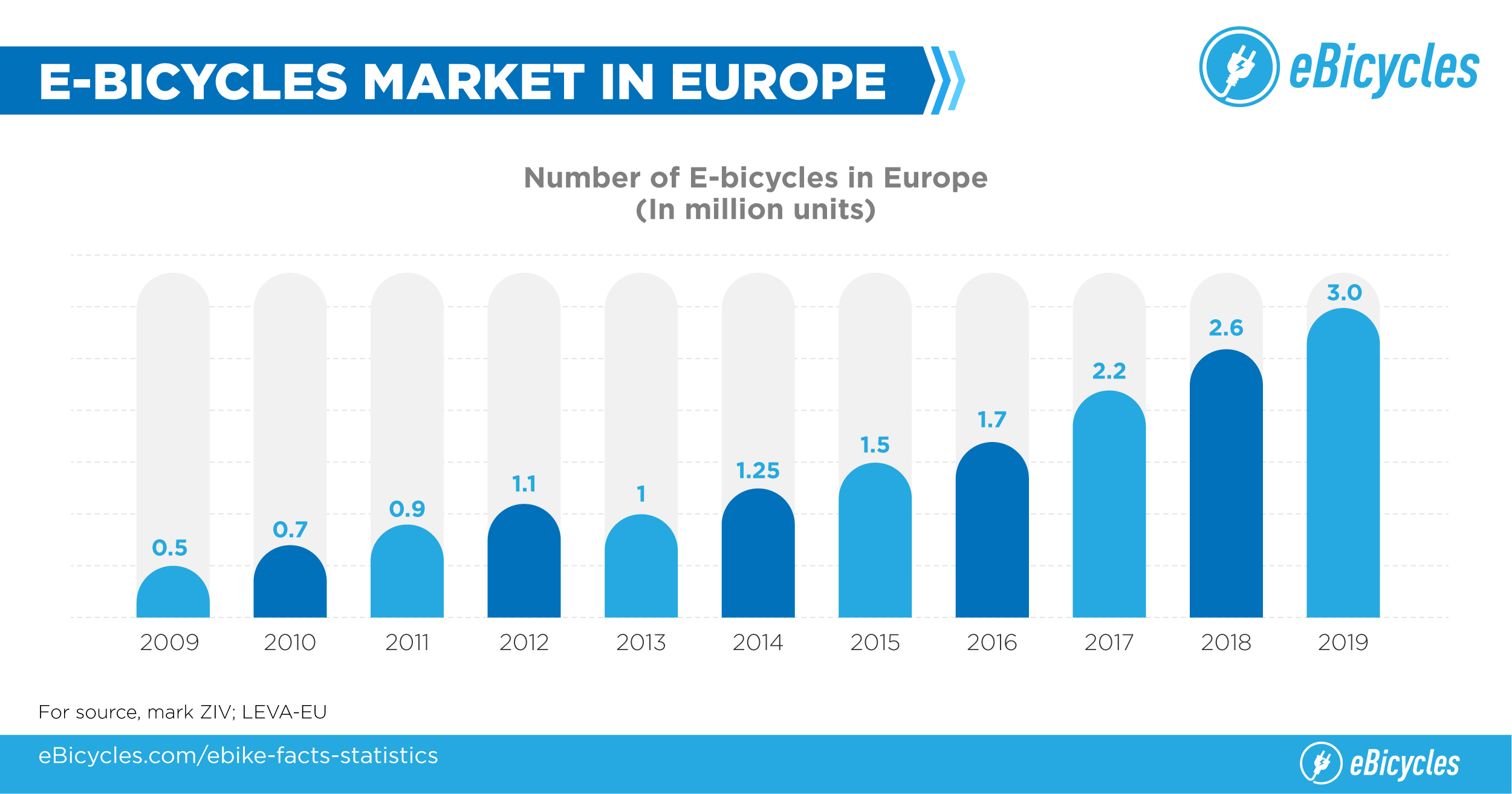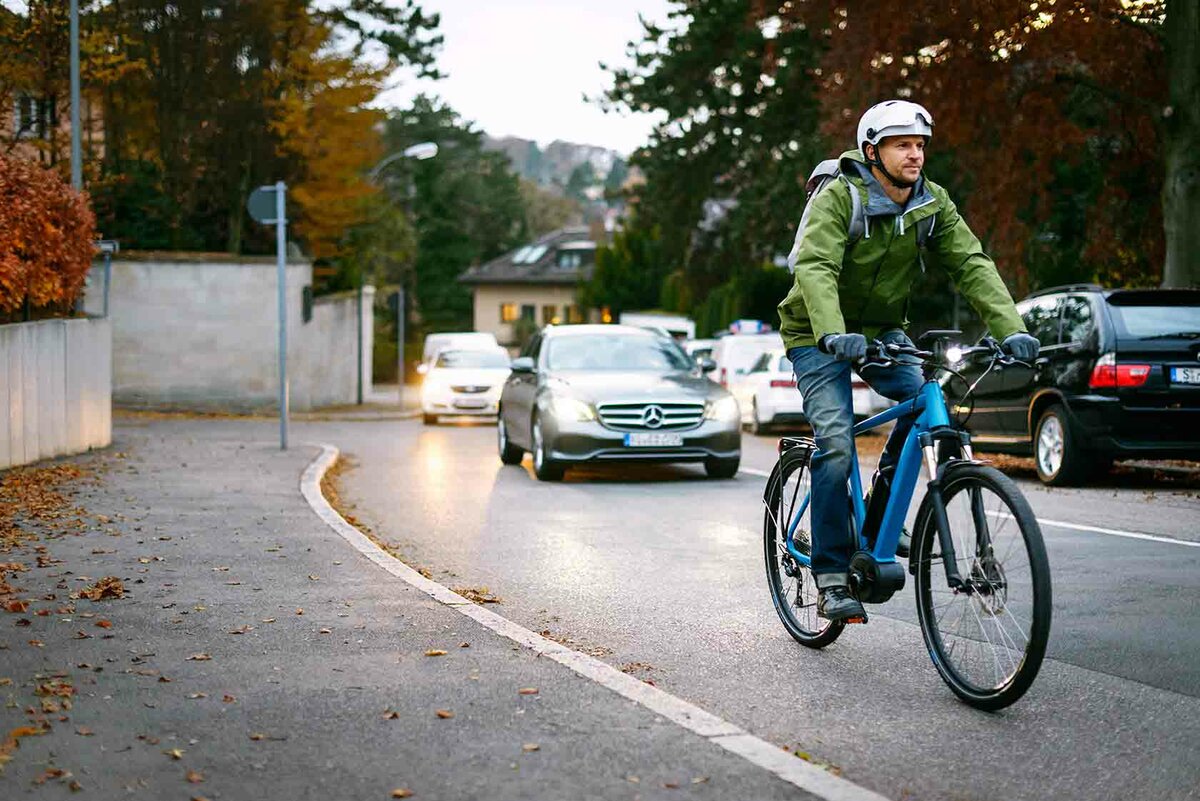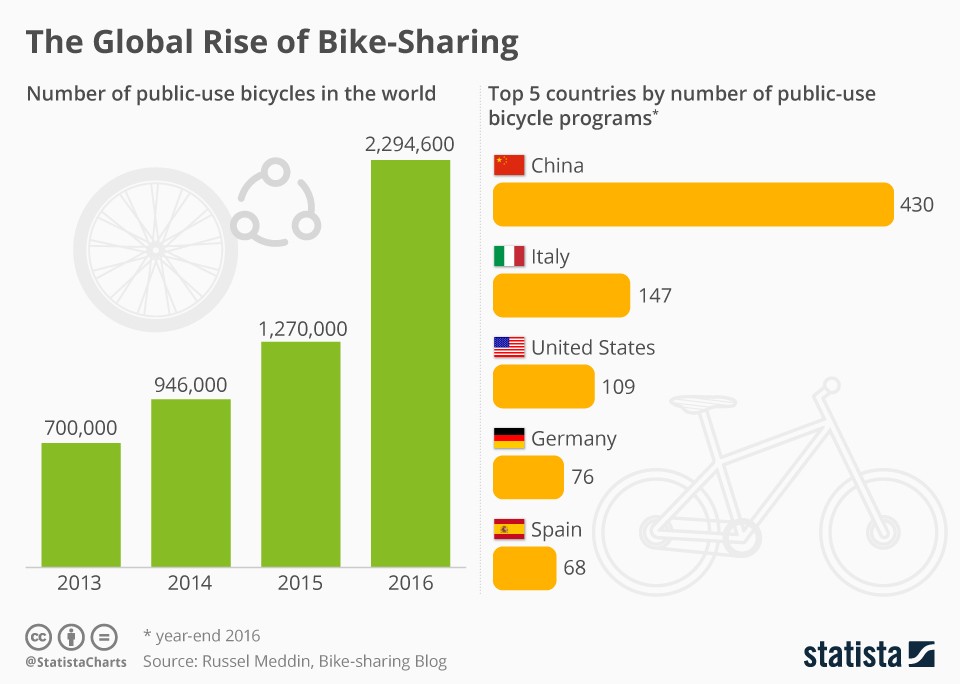The Rise of eBikes and Their Potential Role in Public Transportation
eBikes, or electric bicycles, have gained significant popularity in recent years as a sustainable and flexible transportation option. As more people seek eco-friendly alternatives to traditional cars, eBikes have emerged as a viable solution for short-distance commuting and recreational activities. The increasing demand for eBikes has led to advancements in technology, resulting in more affordable, durable, and efficient models. This growing trend presents an opportunity for cities and transportation agencies to integrate eBikes into existing public transportation systems.
By combining eBikes with public transportation, cities can address various challenges, such as traffic congestion, air pollution, and limited parking options. eBikes can serve as an extension of public transportation, bridging the gap between a transit stop and a commuter’s final destination. This first-mile/last-mile connectivity can significantly enhance the overall accessibility and efficiency of public transportation systems.
Moreover, eBikes offer numerous benefits for commuters, including cost savings, increased flexibility, and a healthier lifestyle. By using eBikes in conjunction with public transportation, commuters can reduce their reliance on personal vehicles, leading to lower transportation expenses and a reduced carbon footprint. Additionally, eBikes provide an active mode of transportation, promoting physical activity and improving overall well-being.

Benefits of Combining eBikes with Public Transportation
Integrating eBikes into public transportation systems offers numerous advantages for cities, transportation agencies, and commuters alike. By adopting eBike-friendly policies, cities can enhance the overall accessibility, cost savings, and flexibility of their public transportation systems.
Increased Accessibility
eBikes can extend the reach of public transportation by providing a seamless connection between transit stops and a commuter’s final destination. This first-mile/last-mile connectivity is particularly beneficial for individuals living in areas with limited public transportation options or those with mobility challenges. By offering eBike rental programs or designated parking spaces at transit stations, cities can significantly improve the accessibility of their public transportation systems.
Cost Savings
Using eBikes in conjunction with public transportation can lead to substantial cost savings for commuters. By reducing their reliance on personal vehicles, commuters can lower their transportation expenses, including fuel, maintenance, and parking costs. Additionally, eBike rental programs offer an affordable alternative to car ownership, providing commuters with a convenient and cost-effective transportation option.
Enhanced Flexibility
eBikes offer commuters the flexibility to create a personalized transportation plan that suits their specific needs. For instance, commuters can use eBikes to travel to a transit station, then switch to a bus or train for longer distances, and finally, use the eBike for the final leg of their journey. This flexibility can help commuters avoid traffic congestion, reduce stress, and increase overall satisfaction with their daily commute.
Environmental Benefits
Promoting eBike usage in public transportation also contributes to environmental sustainability. eBikes produce zero emissions and require minimal energy to operate, making them an eco-friendly alternative to traditional cars and buses. By encouraging commuters to use eBikes, cities can reduce their overall carbon footprint and contribute to a healthier environment.
How to Implement eBike-Friendly Public Transportation Policies
Implementing eBike-friendly policies in public transportation systems requires careful planning and coordination between cities, transportation agencies, and stakeholders. By following a step-by-step approach, cities can successfully integrate eBikes into their existing public transportation infrastructure, enhancing accessibility, cost savings, and flexibility for commuters.
Step 1: Assessing the Current Infrastructure
Begin by evaluating the current state of public transportation infrastructure and identifying areas where eBike integration can be most beneficial. This may include assessing the availability of bike racks on buses, designated parking spaces at transit stations, and the feasibility of eBike rental programs.
Step 2: Engaging Stakeholders and the Community
Involve key stakeholders, such as transportation agencies, city planners, and local eBike retailers, in the decision-making process. Additionally, gather input from the community to ensure that eBike-friendly policies align with the needs and preferences of commuters. Public engagement can help generate support for eBike initiatives and foster a sense of ownership among community members.
Step 3: Developing eBike-Friendly Policies
Create a comprehensive set of eBike-friendly policies tailored to the specific needs of the city and its commuters. These policies may include:
- Designated parking spaces at transit stations
- eBike rental programs
- Fare integration between eBikes and public transportation
- Safety guidelines and infrastructure improvements, such as bike lanes and traffic signals
Step 4: Implementing eBike-Friendly Policies
Once the policies have been developed, execute the necessary infrastructure improvements and technology upgrades to support eBike integration. This may involve installing bike racks on buses, constructing bike lanes, and implementing fare integration systems.
Step 5: Monitoring and Evaluating the Impact
Regularly assess the effectiveness of eBike-friendly policies by monitoring key performance indicators, such as ridership numbers, commuter satisfaction, and reductions in traffic congestion and emissions. Use this data to refine and improve eBike integration strategies over time.
Step 6: Promoting eBike Usage in Public Transportation
Encourage eBike usage in public transportation by offering incentives, providing educational resources, and fostering partnerships with local eBike retailers. This can help raise awareness of eBike-friendly policies and increase adoption among commuters.
Step 7: Continuous Improvement
Continuously review and update eBike-friendly policies to ensure they remain relevant and effective. Stay informed about advancements in eBike technology and transportation trends to maintain a forward-thinking approach to eBike integration in public transportation.

Examining Successful eBike Integration in Public Transportation
As eBikes continue to gain popularity, many cities have successfully integrated them into their public transportation systems, improving first-mile/last-mile connectivity, reducing traffic congestion, and lowering emissions. By examining the experiences of cities like Oslo, Paris, and Berlin, we can gain valuable insights into the best practices for incorporating eBikes in public transportation.
Oslo, Norway: A Holistic Approach to eBike Integration
In Oslo, a comprehensive approach to eBike integration has been adopted, with a strong focus on promoting eBikes as a sustainable transportation option. The city has invested in extensive bike lane infrastructure, eBike rental programs, and fare integration between eBikes and public transportation. As a result, eBikes have become a popular choice for commuters, with over 10% of all trips in the city now made by bike.
Paris, France: A Bike-Sharing Revolution
Paris has experienced a bike-sharing revolution, with the introduction of the Vélib’ eBike rental system. With thousands of eBikes available at docking stations throughout the city, commuters can easily access eBikes for their daily commutes. The city has also expanded its bike lane network and implemented safety measures, such as dedicated traffic signals for cyclists. This has led to a significant increase in eBike usage, with over 300,000 daily trips made on Vélib’ eBikes.
Berlin, Germany: A Multi-Modal Transportation Network
Berlin has developed a multi-modal transportation network that seamlessly integrates eBikes with public transportation. The city offers eBike rental programs, designated parking spaces at transit stations, and fare integration between eBikes and public transportation. By promoting eBikes as a convenient and sustainable transportation option, Berlin has reduced traffic congestion, lowered emissions, and increased accessibility for commuters.
These successful examples demonstrate the potential of eBikes in public transportation. By investing in infrastructure, eBike rental programs, and fare integration, cities can effectively incorporate eBikes into their public transportation systems, improving the commuting experience for residents and visitors alike.

Challenges and Solutions for eBike Integration in Public Transportation
While eBikes in public transportation offer numerous benefits, there are also challenges to consider when implementing eBike-friendly policies. Addressing these challenges requires a proactive approach and innovative solutions. Here are some potential challenges and solutions for eBike integration in public transportation:
Infrastructure Limitations
One of the primary challenges in implementing eBike-friendly public transportation policies is the lack of adequate infrastructure. Cities may not have sufficient bike lanes, parking spaces, or charging stations to accommodate eBikes. To address this challenge, cities can:
- Invest in bike lane infrastructure, ensuring that eBikes have a safe and dedicated space on the road.
- Create designated eBike parking spaces at transit stations, making it easier for commuters to combine eBikes with public transportation.
- Install charging stations at transit stations, allowing eBike users to charge their bikes while using public transportation.
Safety Concerns
Safety is a significant concern for eBike users, particularly when sharing the road with cars and other vehicles. To address safety concerns, cities can:
- Implement safety measures, such as dedicated traffic signals and bike lanes, to protect eBike users.
- Provide educational resources to eBike users, teaching them how to ride safely and follow traffic laws.
- Promote the use of helmets and other safety gear for eBike users.
Public Perception
Despite the benefits of eBikes in public transportation, some people may be resistant to the idea. To address public perception, cities can:
- Promote the benefits of eBikes, such as reduced traffic congestion and lower emissions.
- Provide incentives for eBike usage, such as discounted fares or free parking.
- Foster partnerships with local eBike retailers, creating a network of support for eBike users.
By addressing these challenges, cities can effectively incorporate eBikes into their public transportation systems, improving the commuting experience for residents and visitors alike. With a proactive approach and innovative solutions, eBikes can become a vital component of public transportation, promoting sustainability, accessibility, and flexibility for commuters.
The Future of eBikes in Public Transportation
As eBikes continue to gain popularity, their potential role in public transportation is becoming increasingly evident. The future of eBikes in public transportation is bright, with advancements in technology, growing environmental awareness, and changing commuting patterns driving their adoption. Here are some factors that will shape the future of eBikes in public transportation:
Advancements in Technology
Technological advancements in eBikes, such as improved battery technology and smart features, will make them even more convenient and accessible for commuters. For instance, eBikes with swappable batteries can provide unlimited range, making them ideal for long-distance commuting. Smart features, such as GPS tracking and theft prevention, will also enhance the user experience.
Growing Environmental Awareness
As more people become aware of the environmental impact of their commuting choices, eBikes will become an increasingly attractive option. eBikes produce zero emissions, making them a sustainable alternative to cars and public transportation. Cities can promote eBikes as a green commuting option, encouraging more people to adopt them.
Changing Commuting Patterns
The COVID-19 pandemic has accelerated the trend of remote work, with many people working from home or adopting flexible work arrangements. This shift in commuting patterns will create a demand for flexible and convenient transportation options, such as eBikes. Cities can capitalize on this trend by promoting eBikes as a convenient and cost-effective alternative to traditional public transportation.
Integration with Public Transportation
The future of eBikes in public transportation will involve closer integration with existing public transportation systems. Cities can create eBike rental programs at transit stations, allowing commuters to rent eBikes for the first or last mile of their commute. Fare integration, where eBike usage is included in the cost of public transportation, will also make eBikes more accessible and convenient for commuters.
In conclusion, the future of eBikes in public transportation is promising, with advancements in technology, growing environmental awareness, and changing commuting patterns driving their adoption. By promoting eBikes as a green and convenient transportation option, cities can reduce traffic congestion, lower emissions, and improve the commuting experience for residents and visitors alike.

Selecting the Right eBike for Public Transportation Commuting
When it comes to commuting with eBikes, choosing the right eBike is crucial. Here are some factors to consider when selecting an eBike for public transportation commuting:
Range
One of the most important factors to consider when selecting an eBike for public transportation commuting is its range. The range of an eBike refers to the distance it can travel on a single charge. If you plan to use public transportation for part of your commute, you’ll want to choose an eBike with a range that can cover the distance between your home, public transportation, and your workplace. Look for eBikes with a range of at least 20-30 miles for a reliable commute.
Durability
Another important factor to consider is the durability of the eBike. Public transportation can be rough on bikes, so you’ll want to choose an eBike that can withstand the wear and tear of daily commuting. Look for eBikes with sturdy frames, puncture-resistant tires, and high-quality components. eBikes with a foldable design can also be a good option for public transportation commuting, as they can be easily stored and transported.
Affordability
Affordability is also an important factor to consider when selecting an eBike for public transportation commuting. While eBikes can be more expensive than traditional bikes, there are many affordable options available. Look for eBikes with a reasonable price point and good value for money. Consider the total cost of ownership, including the cost of maintenance and replacement parts, when making your decision.
Specific eBike Models</h

Promoting eBike Usage in Public Transportation: Best Practices
Promoting eBike usage in public transportation can have numerous benefits for both commuters and cities. Here are some best practices for promoting eBike usage in public transportation:
Offer Incentives
Offering incentives is a great way to encourage people to try eBikes. Consider offering discounted or free eBike rentals for a limited time, or providing subsidies for eBike purchases. You can also offer rewards for commuters who use eBikes in conjunction with public transportation, such as discounted fares or priority boarding.
Provide Educational Resources
Many people are unfamiliar with eBikes and how they can be used in conjunction with public transportation. Providing educational resources, such as instructional videos, how-to guides, and safety tips, can help people feel more comfortable using eBikes. Consider offering workshops or classes on eBike usage and maintenance, and make sure to provide clear signage and instructions at eBike parking and rental locations.
Foster Partnerships with Local eBike Retailers
Partnering with local eBike retailers can help promote eBike usage in public transportation. Consider offering discounts or special deals for eBikes purchased from local retailers, or partnering with retailers to offer eBike rentals at public transportation hubs. You can also work with retailers to provide maintenance and repair services for eBikes, making it easier for commuters to keep their eBikes in good working order.
Create Designated Parking Spaces
Creating designated parking spaces for eBikes at public transportation hubs can help encourage their use. Make sure to provide secure and convenient parking options, such as bike racks or lockers, and consider offering charging stations for eBikes. Clear signage and wayfinding can also help commuters locate eBike parking and rental locations.
Integrate Fares
Integrating fares for public transportation and eBikes can help encourage their use in conjunction. Consider offering discounted fares for commuters who use eBikes to travel to and from public transportation hubs, or providing a seamless payment system that allows commuters to pay for both eBike rental and public transportation fares with a single payment.
Promote Safety
Promoting safety is essential for encouraging eBike usage in public transportation. Make sure to provide clear safety guidelines and regulations for eBike usage, and consider offering safety training or education programs. Consider implementing safety features, such as helmet vending machines or designated eBike lanes, to help ensure the safety of commuters.
Measure Success
Measuring the success of eBike promotion programs is essential for understanding their impact and making improvements. Consider tracking metrics such as eBike rental usage, public transportation ridership, and commuter satisfaction. Use this data to make informed decisions about eBike promotion programs and to identify areas for improvement.


